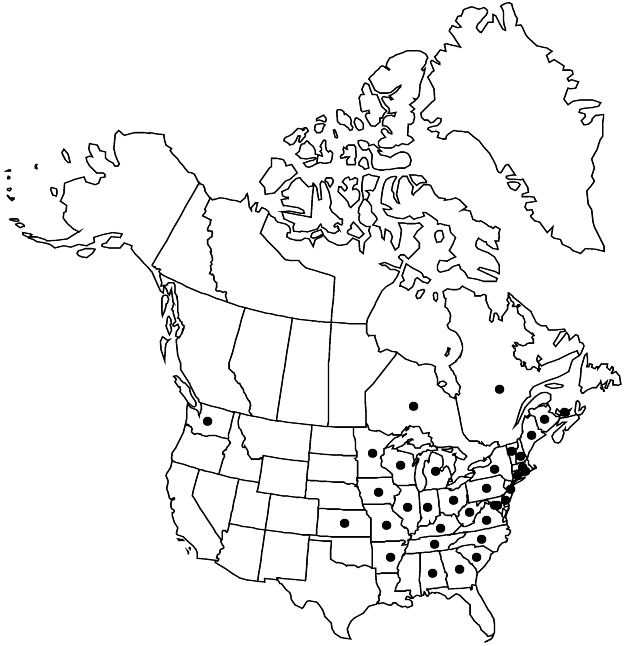Celastrus orbiculatus
Syst. Veg. ed. 14, 237. 1784.
Common names: Oriental bittersweet
WeedyIntroduced
Treatment appears in FNA Volume 12. Treatment on page 120.
Revision as of 23:41, 26 July 2019 by FNA>Volume Importer
Vines 40+ m. Leaves: blade suborbiculate to broadly oblong-obovate or ovate-orbiculate, 4–6 × 3–5 cm, aestivation conduplicate. Inflorescences axillary, cymes, 1–2 cm. Staminate flowers: pollen white. Capsules yellow when mature, globose, 7–10 mm diam., glabrous. Seeds orange, ellipsoid, 6 mm. 2n = 46.
Phenology: Flowering spring–summer.
Habitat: Thickets, woodland margins, open woods, roadsides, usually rich soils.
Elevation: 0–900 m.
Distribution

N.B., Ont., P.E.I., Que., Ala., Ark., Conn., Del., D.C., Ga., Ill., Ind., Iowa, Kans., Ky., Maine, Md., Mass., Mich., Minn., Mo., N.H., N.J., N.Y., N.C., Ohio, Pa., R.I., S.C., Tenn., Vt., Va., Wash., W.Va., Wis., Asia (China, Japan, Korea).
Discussion
Celastrus orbiculatus has become a seriously invasive plant in much of eastern North America.
Selected References
None.
Lower Taxa
None.
... more about "Celastrus orbiculatus"
Oriental bittersweet +
N.B. +, Ont. +, P.E.I. +, Que. +, Ala. +, Ark. +, Conn. +, Del. +, D.C. +, Ga. +, Ill. +, Ind. +, Iowa +, Kans. +, Ky. +, Maine +, Md. +, Mass. +, Mich. +, Minn. +, Mo. +, N.H. +, N.J. +, N.Y. +, N.C. +, Ohio +, Pa. +, R.I. +, S.C. +, Tenn. +, Vt. +, Va. +, Wash. +, W.Va. +, Wis. +, Asia (China +, Japan + and Korea). +
true +
Syst. Veg. ed. +
1784 +
Celastrus orbiculatus +
Celastrus +
species +